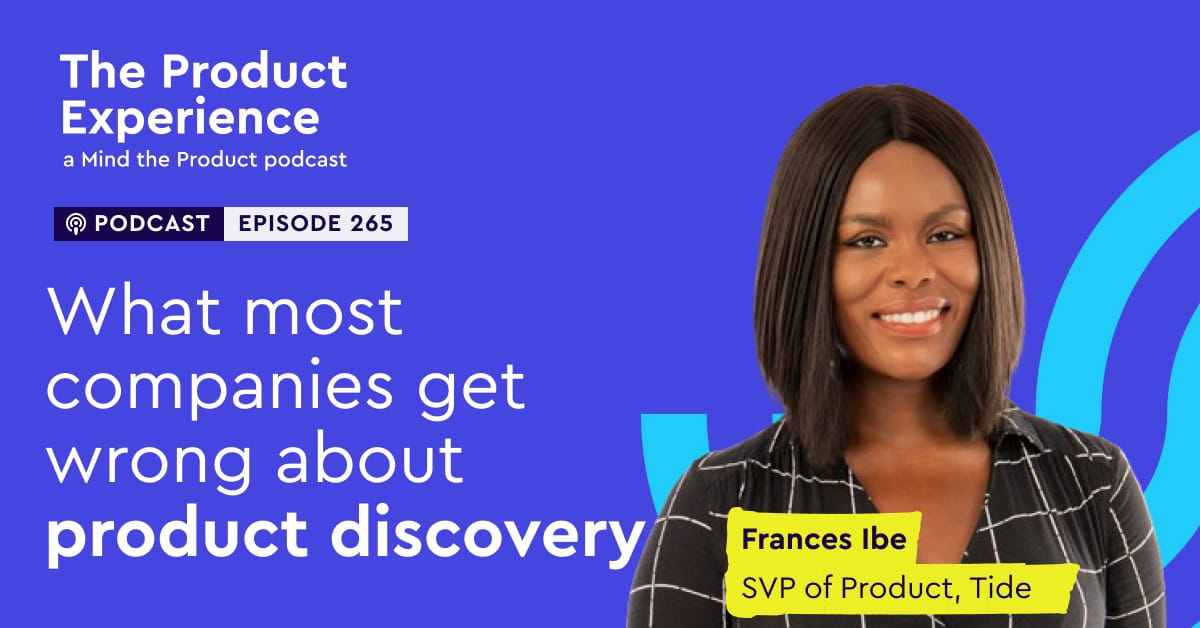At some point or other in your product career you’re bound to come across a bad leader. Maybe they're someone who isn’t transparent about what they want, someone who makes decisions without telling you, someone who vacillates and isn’t sure about what direction to take - whatever they are you need to find ways to deal with them.
Here are some all-too-common scenarios in which poor leadership can thrive.
Fractional product leader and founder of The Female Product Lead Beks Yelland says she’s experienced poor leadership when she’s come into a business as either its first product person or when its product function is at its very early stages. She thinks it’s idealistic to assume that you’ll always get advocacy and support from the C suite, so she tries to understand the journey that led the leadership team to bring in product leadership. “It might be that the reality of the cost and the investment of bringing in a product person has not been understood. Maybe you haven't done a good enough job of managing expectations, or didn’t think that you needed to do this,” she says.
She remembers one job earlier in her career. She says: “In my first week, the head of data science started shouting at me about how Agile was lunacy that no one needed, and who did I think I was. It was really toxic from the start.”
In this Product Experience podcast episode, Keji Adedeji, Interim Product Director at the International Baccalaureate, talks about the frustrating and “crazy” things that organisations do. She’s got lots of war stories that illustrate poor leadership - developers who were not allowed to move a Jira card but had to tell someone else so that they could move it, the transport company that started to use the passenger luggage compartments of long-haul buses to move fish around a country. She says: “The metric becomes the target. It has nothing to do with whether it’s the right thing to do.”
You’ll get a good idea of the state of an organisation’s leadership by looking at its communication.
There are a number of general actions a product person can take to combat poor leadership.
Lead by example: Even if higher-level leadership is lacking, you can demonstrate good leadership within your own sphere of influence. Do this by focusing on clear communication, setting a compelling vision, and supporting your team. Focus on what you can control.
Seek clarity and alignment: If overall leadership is unclear, try to get more information about the company's goals and strategy. You can use this to guide your product decisions and help your team navigate uncertainty.
Advocate for better processes: If poor leadership manifests as inefficient processes, propose improvements. For example, suggest implementing regular strategy reviews or better communication channels.
Build cross-functional relationships: Strong relationships across departments can help mitigate the effects of poor top-level leadership. Collaboration with other teams will help to ensure product goals are in step with business objectives. You will be able to find allies and create a support network.
Use data to build your influence: Use data to support your decisions and demonstrate the value of your work. This can help counter arbitrary or poorly-informed directives from above.
Upskill yourself and your team: Invest in developing skills that can help you navigate challenging leadership environments, such as stakeholder management and strategic thinking.
Create a buffer for your team: Provide them with clear direction and support to maintain morale and productivity and you'll help to shield them from the negative effects of poor leadership.
Document and communicate: Keep records of decisions, their rationale, and outcomes. This helps to create accountability and provides evidence if you need to escalate issues.
Beks Yelland focused on what she could control in her toxic workplace. “I thought about what I could do to survive and, at a stretch, thrive in the role,” she says. It meant managing her own expectations about what she would be able to achieve and trying to distance herself as much as possible from the culture. “I ended up focusing on building a team. It hadn't felt like we were a team before this, but we developed some well-understood processes on how to survive.”
Rather than see poor leadership as malign, Simon Cross, Chief Product Officer at Native Instruments Group, has a slightly different take on the problem. He feels you should always assume good intent and try to analyse the situation from the leader’s perspective, so that you can understand their context. He says an ask from a leader is, “sometimes very clear, but most of the time it’s not”. He says: “The first thing I try is to assume good intent. Put yourself in the mind of that leader. Often leaders are being asked to get things done that they don't understand."
He points out that because your purview expands as you go up the corporate pyramid you become less and less expert. “I've been in loads of situations where people have asked me to do things and they didn't know what they wanted, they didn't know what they needed, They came across as looking like they did, but they didn't.”
Simon focuses on what he can control and falls back on frameworks to help him through such situations. The 5 Whys is one framework that he returns to time and again. He gives an example: “The trust and safety team in a large company might say they want a reduction in the prevalence of harm. But they might want a reduction in the perception of harm, rather than the prevalence of harm, which leads you to something different. I've been in lots of situations like this, where there is actually something else behind the ask.” Going through the 5 Whys means you’ll understand what success looks like for the person asking you to do something, he says.
He also suggests giving leaders a list of options to choose from. If there are lots of reports of an app crashing, for instance, you’ve been asked to rectify it, you might come up with a list of options as follows:
Option A fixes the problem - it takes six months but will be effective
Option B fixes the problem - it will suit a small cohort of users that can be done tomorrow
Option C fixes the problem - it will work for most users and take a couple of weeks
“Leaders often don’t know what they want until you tell them what they can have,” Simon says. ”They don't know the details of the technology. They don't know the details of what's possible, feasible, or desirable. Trade-offs are your job as a product manager. It’s your job to give them the tools to make an effective decision and to give you effective guidance.”





